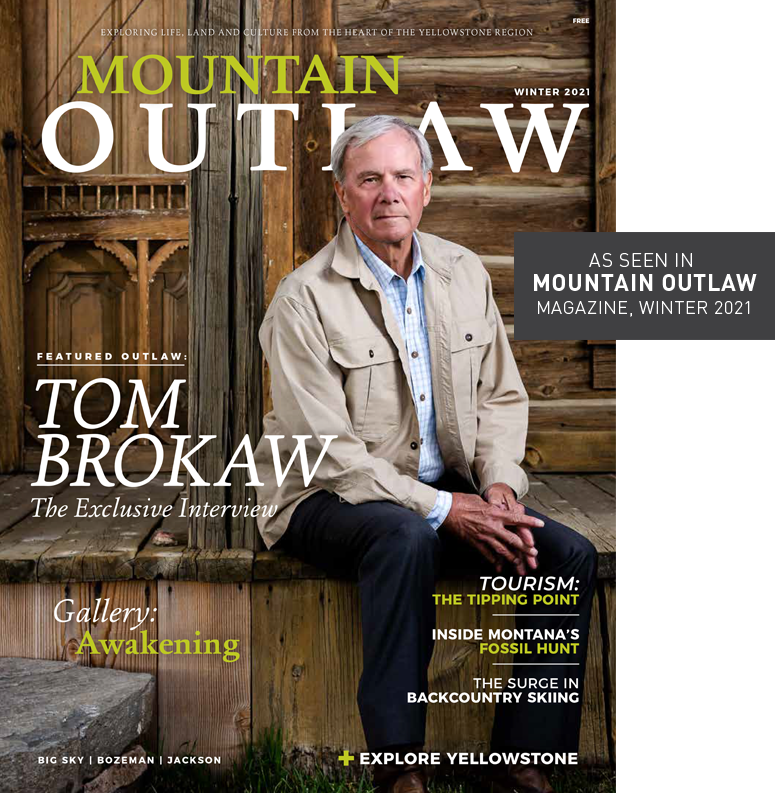How Summit Aviation is changing the face of private air travel.
BY PATRICK STRAUB
Ben Walton came to Montana in a van and with a pair of Rossignol skis. Nearly 20 years later, Walton is now responsible for over $100 million in jets flying throughout the U.S., has nearly 70 employees and pilots, and runs a comprehensive flight school. As modest as his Montana beginning was, Walton founded Summit Aviation in 1998 with one airplane and one hanger.
Walton has a quiet confidence about him—exactly the personality one would trust at the helm of your safety at 45,000 feet. It is this calm collectiveness that has catapulted Summit into a nationwide player in private aviation, despite being in the relative geographic hinterlands of air charter service.
“The world of private air charter is very complex, but it’s also very small,” Walton says from his office overlooking the tarmac at Bozeman-Yellowstone International Airport. “The personal component of our business meshes so well with our homegrown model.” Across the taxi and runway, snow blankets the Bridger Mountains. The backdrop of one of Montana’s most prominent mountain ranges is fitting for Summit’s home base.
The idea of a local business going big isn’t new. The Gallatin Valley in Montana is filled with small companies whose visionary leaders ballooned their businesses into the national or international scene. But for Walton and Summit to do it in the world of private aviation required just the right amount of patience balanced with calculated decision making, much like landing a jet on a mountain runway.
Just over 1.5 million passengers travel through Bozeman-Yellowstone International airport annually. On taxi or take-off, they all pass by Summit Aviation’s office, but they likely don’t see Summit’s planes on the ground. With one of the largest fleets of Phenom 300s in the country and a nationally recognized flight school, Summit’s planes and pilots are often in the air more than on the tarmac.
“Our commitment to safety starts right here,” Walton says as he opens the door to a DA42 TwinStar, one of the aviation industry’s most sought after small planes and one ideally suited for flight instruction. These planes, along with a fleet of Diamond and Cessna aircraft, are the engines that drive Summit’s flight school. “Many of our pilots started here and now fly our charter jets,” says Walton. “We’ve known them since day one.”
“Whether it’s someone’s first solo flight or when someone purchases their first aircraft, our passion for flying resonates through everything we do and with our customers as well,” he adds.
“The personal component of leisure or business air travel is paramount at Summit,” says Walton. “With almost two decades of flying people throughout the country and the world, our focus on safety and service is unparalleled in the industry.”
“We have milestones each day at Summit.”
For many, the milestone of purchasing a plane is a moment to recognize one’s hard work and a dream fulfilled. Fortunately, aircraft ownership can happen in a variety of ways and may be more attainable than some think.
The cleanest and most flexible route is to own a plane outright and once it’s purchased the owner can hire Summit to manage the aircraft. This ensures all facets of ownership are organized and maintained, including pilots, safety and maintenance. With Summit’s industry-leading presence, the company offers the option to charter additional flights for the aircraft, creating a revenue stream for the owner when the plane is not being used.
Other ownership strategies include fractional ownership or a prepay option. Fractional owners get all the benefits of outright ownership, they just have to coordinate their use with other owners. Summit provides this level of organizational assistance with a personalized support team, which includes educating people interested in private air charters. Plus, there maybe some tax advantages to buying a private jet.
Incentives have come in the form of the federal CARES Act, and fliers are enjoying some of the added benefits. “With all of its challenges, the current times are exciting for private air travel,” Walton says. “[And] with additional tax savings created by the CARES Act, paired with the safety and convenience of private air charter, more business and leisure travelers are gravitating away from commercial and going private.”
The CARES Act reinstates the ability for taxpayers to deduct current year losses against the income from prior years, creating an immediate tax refund. If a private jet is acquired as a business asset and the taxpayer uses the 100 percent depreciation option, tax refunds can backdate as far as 2015.
Tax savings are a consideration as well, but for business owners looking to keep employees safe and traveling less, shifting to private air travel may make more sense in the long run. Employees will spend less time in crowded commercial airports or large hotels. The shift to private air travel may see charter flights as the new corporate boardroom.
“The personal component of leisure or business air travel is paramount at Summit,” says Walton. “With almost two decades of flying people throughout the country and the world, our focus on safety and service is unparalleled in the industry.”
Walton’s phone buzzes. It’s a text from a Summit client looking to have a plane ready tomorrow to bring a group of skiers to Bozeman—there’s a winter storm headed our way and the powder is forecast to be deep. As he reads the text, several students outside the large picture window ready a Cessna for a Discovery Flight, one of Summit’s signature offerings for first-time fliers. Beyond them a brand-new Phenom 300 pulls away from its hangar and prepares for takeoff.
If the powder does indeed come tomorrow, Walton will surely ski it. He won’t have to sleep in his van to get first chair, but he will make sure the planes in the air and on the ground are safe and secure.
Visit their website for more information: www.flysummit.com

